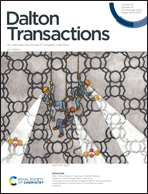Construction of reduced graphene oxide wrapped yolk–shell vanadium dioxide sphere hybrid host for high-performance lithium–sulfur batteries†
Abstract
Owing to the considerable theoretical energy density, lithium–sulfur batteries have been deemed as a competitive candidate for the next-generation energy storage devices. However, its commercialization still depends on the moderation of the shuttle effect and the conductivity improvement of the sulfur cathode. Herein, a novel reduced graphene oxide (rGO) wrapped yolk–shell vanadium dioxide (VO2) sphere hybrid host (rGO/VO2) is reported to simultaneously tackle these barriers. In particular, the polar VO2 sphere can chemically anchor and catalyze the conversion of polysulfides effectively both on the yolk and the shell surfaces. Meanwhile, the highly conductive 3D porous rGO network not only allows sufficient penetration of electrolyte and provides efficient transport pathways for lithium ions and electrons, but also buffers the volume variation during the lithiation process. Besides, the dissolution of the polysulfides can also be alleviated by physical confinement via the interconnected carbon network. Benefiting from these synergistic features, such designed rGO/VO2/S cathode delivers outstanding cycle stability (718.6 mA h g−1 initially, and 516.1 mA h g−1 over 400 cycles at 1C) with a fading rate of 0.07% per cycle. Even at 3C, a capacity of 639.7 mA h g−1 is reached. This proposed unique structure could provide novel insights into high-energy batteries.



 Please wait while we load your content...
Please wait while we load your content...